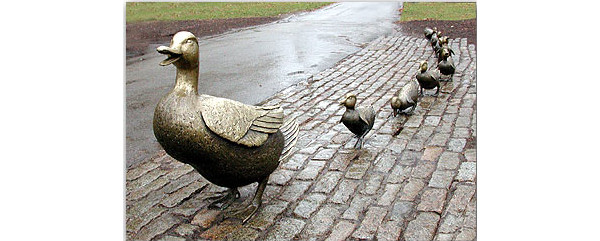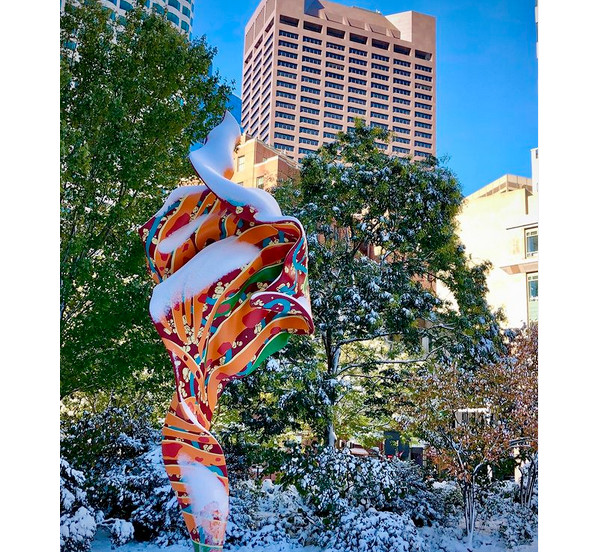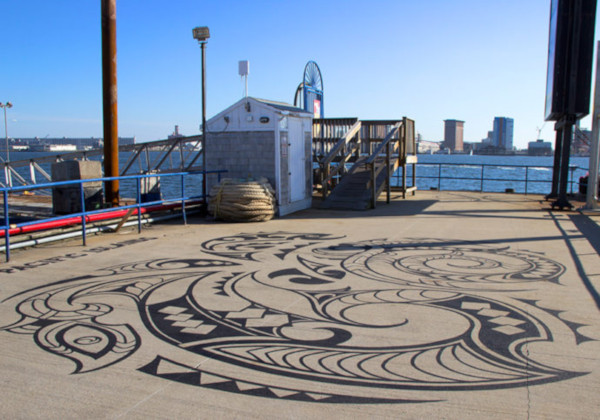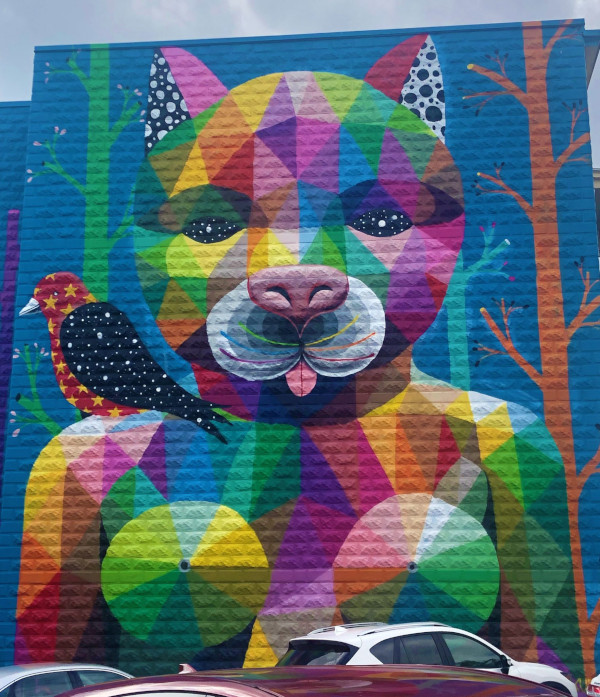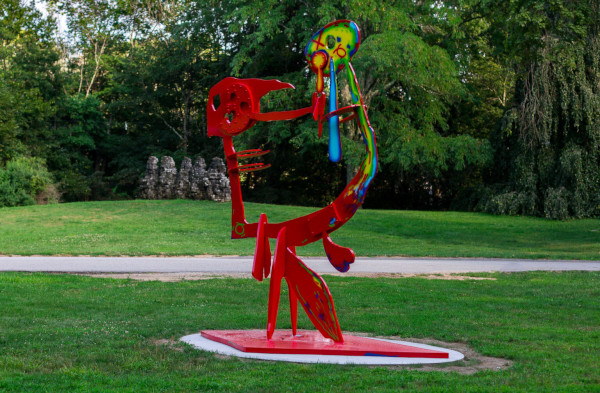Boston’s many historical markers and statues, the Freedom Trail, and the beautiful park system with its fountains, ponds and gardens are all familiar to locals and visitors. But the city also profits from the many educational institutions and creative residents who gravitate to the Greater Boston area, with opportunities for art explorations both in Beantown proper and outside of the city.
Downtown is a wonderful starting point for an art stroll with both permanent and changing exhibits designed to keep you stimulated and curious, and outdoors.
Robert McCloskey’s beloved children’s book, “Make Way for Ducklings” is honored in the Boston Public Garden with a family-favorite sculpture of Mrs. Mallard with her eight ducklings created by sculptress Nancy Schon. Celebrating 33 years as a fixture in the park, the bronze ducks inspire on-site birthday parties not only for the visitors but also for the ducks themselves. Today, the ducklings sport masks, encouraging visitors to maintain social distancing and wear their face coverings.
Cross the street from the Public Garden, strolling through the Boston Common towards Government Center and Faneuil Hall, and you will reach one of the prides of the Boston Big Dig construction project. By removing the John Fitzgerald Kennedy expressway, two areas of the city that were previously disconnected were brought together and beautified with gardens, flowers and art paralleling the waterfront. Named the Rose Kennedy Greenway, this mile-long area connects Chinatown, the Financial District, the Waterfront and the North End. Since its opening in 2008, the curvilinear park has hosted a changing gallery of themed public art and light installations ranging from pigs celebrating the Year of the Pig, to historic neon signs from Massachusetts and the permanent Harbor Fog water feature sculpture. The Greenway, as its known, welcomes artists to submit their ideas for installations and the rotating gallery of murals.
Across the Harbor towards Logan Airport, Boston HarborArts has been welcoming visitors to their outdoor shipyard-turned-gallery for more than a decade. Located at the Boston Harbor Shipyard & Marine in East Boston, the outdoor art park sits in Jeffries Point across from the Seaport. The “museum” is 100% outdoors and free of charge. Featuring local and international artists, the outdoor gallery is a rotating art gallery covering 14 acres. A bonus: as you meander through the gritty industrial area, along the Boston HarborWalk, you’ll have many instagrammable moments of both the art and the city skyline across the harbor.
Walking around the Seaport itself affords many opportunities to see public art. Winter and spring are prime times for major installations but art peppers the area year-round. Walk along the waterfront by landmark boats and new restaurants, with a view of the burgeoning Fort Point neighborhood in the background, and you’ll see many thought-provoking sculptures. The changing collection has included interactive and kinetic pieces as well as statues from local as well as international artists.,
The North of Boston Mural Map leads you on a colorful voyage through the Greater Boston towns up the coast and inland. With no crowds to distract you indoors, this is a perfect social distancing way to absorb some local color and culture. On more than 100 murals, local topics like witchcraft in Salem are given a distinctive spin with the “Cat Witch” mural by Spanish artist Okuda San Miguel, a Boston favorite known for his multi-colored geometric sculptures in the Seaport. Other murals with more global themes of poetry and love grace buildings in 14 towns from Saugus to Salisbury.
For another art-filled trip from Boston, drive west to the deCordova Sculpture Park and Museum in Lincoln. The park is open with controlled attendance and viewing to effect social distancing. Timed passes can be purchased online. A visit typically takes two hours and no touching of the sculptures is allowed. A favorite among visitors are the three colorful sculptures by Aaron Curry located on the front lawn. Reminiscent of Alexander Calder works, these very contemporary pieces also allude to science fiction, cartoons and stagecraft. UGLY MESS seems to be a sad person with two large tears dripping from its cutout eyes. In the second, HOMEWRECKER, a similar character embraces a bright red creature. The third, BLUBAT, looks like a children’s drawing of a person, but with wings hanging from its arms.


